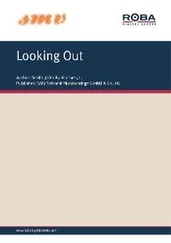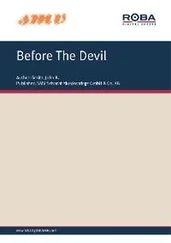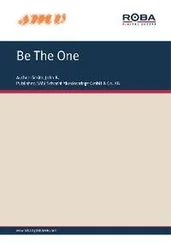ARTHUR CLINTON MAUND
Maund was born in Paddington on 13 December 1891. At the start of the First World War he was in Canada and enlisted in the Canadian infantry. In March 1916, he transferred to the RFC as an observer with 8 Squadron. After flying training, he served as a pilot with 7 Squadron. He served with the Russian mission on the Galician front in 1917, and with the North Russian Expeditionary Force at Archangel in 1918. A permanent commission was granted to him in 1920, with the rank of squadron leader. During the 1920s and 1930s he served at various RAF posts and was promoted to air marshal in 1939. He died in 1942.
WILLIAM ELLIOT
Elliot was born in 1896 and joined the Army in 1914. It was not until 1917 that he transferred to the RFC. He was posted to Palestine to join 142 Squadron in March 1918. The squadron had an intensely busy time in the campaign in Palestine, from the operations around El Salt until the fall of Damascus. After serving with 47 Squadron, he stayed in the RAF. By 1937, he was the assistant secretary (air) to the Committee of Imperial Defence. During the Second World War, he held various commands, including a night fighter base, and also became chief of the Balkan Air Force. After the war, he led Fighter Command and retired as an air chief marshal. He died in 1971.
RALPH SORLEY
Sorley was born on 9 January 1898 at Hornsey, Middlesex. He joined the RNAS in 1914, and in 1916 was granted a commission; he transferred to the RAF in 1918. That same year, he was awarded the DSC for the day and night bombing of the Breslau and Goeben . After serving with 221 Squadron in south Russia, he was in 6 Squadron in Mesopotamia from 1920 to 1922. He then served with 14 Squadron in Palestine until 1924. Most of the rest of his career in the RAF was spent on the technical side, with spells commanding various bases. He also played a part in the establishment of the requirement for eight machine-guns as the armament for the Spitfire and Hurricane.
In 1941, Sorley was appointed assistant chief of air staff (technical requirements). He became controller of research and development at the Ministry of Aircraft Production in 1943 and was a member of the Air Council. Later, he was commander of the Technical Training Command until he retired as an air marshal in 1948. When he left the RAF, he joined DeHavilland Propellers Ltd and became the managing director.
CHRISTOPHER NEIL HOPE BILNEY
Bilney was born at Weybridge, Surrey, in October 1898, and was educated at Tonbridge School. He was commissioned in the RNAS in 1917. His first service was flying patrols over the North Sea in Short floatplanes. In 1918, he was transferred to the east Mediterranean, still flying seaplanes. After serving with 266 Squadron in south Russia, he was given a permanent commission in the RAF.
By 1939, Bilney was commander of the Aeroplane and Armaments Experimental Establishment. He was later in the Directorate of Armament Development. In 1942, he was vice president of the Ordinance Board. He moved to become Bomber Command’s ordinance officer in 1944. When he retired in the 1950s, he was an air vice marshal.
MARION HUGHES ATEN
Aten was born in Amarillo, Texas, on 22 November 1894. His father was a famous Texas Ranger, who moved to California and started the 8 N Bar ranch in the Imperial Valley. Aten was commissioned in the RAF on 24 April 1918. He obtained his RAF flying certificate on 12 November 1918, the day after the Armistice. He volunteered to serve with 47 Squadron in south Russia and left the Crimea in 1920. In the early 1920s, he served in the Middle East and later worked with a training organisation stationed in England. He resigned his commission in 1927 and went back to California to run his father’s ranch. In 1961, he published the story of his time in Russia under the title of Last Train Over Rostov Bridge , co-written with Arthur Orrmont. Aten died in 1961.
Aten’s book has been responsible for more myths about 47 Squadron than any other, and should be viewed as semi-fictional. He claimed he was a captain, but he was never a captain or acting captain and was still a lieutenant when he retired in 1927. He also claimed that he fought in the First World War, in Collishaw’s 203 Squadron, though he was never in 203 Squadron and did not receive his pilot’s wings until the war was over. Among the other things he claimed was that he arrived in Russia in March 1919. This was before any 47 Squadron personnel arrived; it was only on 19 August that he reported for duty with 47 Squadron.
Aten was part of B Flight, commanded by Sam Kinkead. This unit did not go up to the front line until 28 September, but Aten claimed to have shot down five Russian aircraft by that date. In fact, no record can be found for any aircraft shot down by Aten. One of the aircraft that he claimed to have shot down in August was a black Fokker Triplane. This was supposed to have been flown by the leading Red air force pilot in south Russia, who had shot down twelve White air force aircraft. None of this ever happened. Because books dealing with this period are few, Aten’s book has been taken as the truth by a generation of writers. The black Fokker Triplane has appeared in at least a dozen histories, one published as late as 2001. Aten also claimed that the other members of B Flight shot down a considerable number of enemy aircraft; this is not true either. The numbers of Red air force aircraft in the area was never very large. Only three aircraft were claimed as shot down by B Flight, two by Kinkead and one by Burns-Thomson.
Even the title of Aten’s book is incorrect, as his train never made it across Rostov Bridge. He claimed to have been in Ekaterinodar in March 1920 when General Holman made an appeal for volunteers to stay and cover the retreat, but he had been in Novorossisk since January 1920. Aten was awarded a DFC for his exploits in Russia and he did take part in a number of ground attack sorties, but the citation for his medal says that it was for his actions on 27 October 1919. Squadron records show that no flying took place on this day because of bad weather. Having made these criticisms, his book does give a feel for the conditions in Russia during this period.
A. H. HESKETH
Born in London in July 1899, Hesketh joined the Army in 1917, was transferred to the RFC as a cadet in 1918, and was commissioned in the RAF in the same year . In 1920, he was awarded the DFC for services in south Russia. He retired from the air force as an air vice marshal.
WALTER FRASER ANDERSON
Anderson was born at Ryde on the Isle of Wight in 1890. His father, who was a minister, moved to Toronto in Canada while Anderson was a child. At the start of the First World War, he joined the Canadian Army and was sent overseas on 28 March 1915. Later, on 25 February 1916, he transferred to the RFC. While serving with 42 Squadron, he was wounded on 29 August 1916. He returned to serve in France with 9 Squadron between 14 September and 3 December 1917. Promoted to flight lieutenant, he served with 217 Squadron until the end of the war.
After serving with 47 Squadron in Russia, Anderson was given a permanent commission and stayed with the RAF until 1927. He worked for British Airways until he was killed in a crash in September 1936. After taking off from Gatwick, while flying a DH86 on the night mail run to Germany, he seems to have tried to turn back to the runway but lost height and crashed into a tree.

Detail of picture here.
Читать дальше













